10 beige living room ideas prove that beige is anything but boring
Neutrals never go out of style – here's how to style up the shade for a fresh look
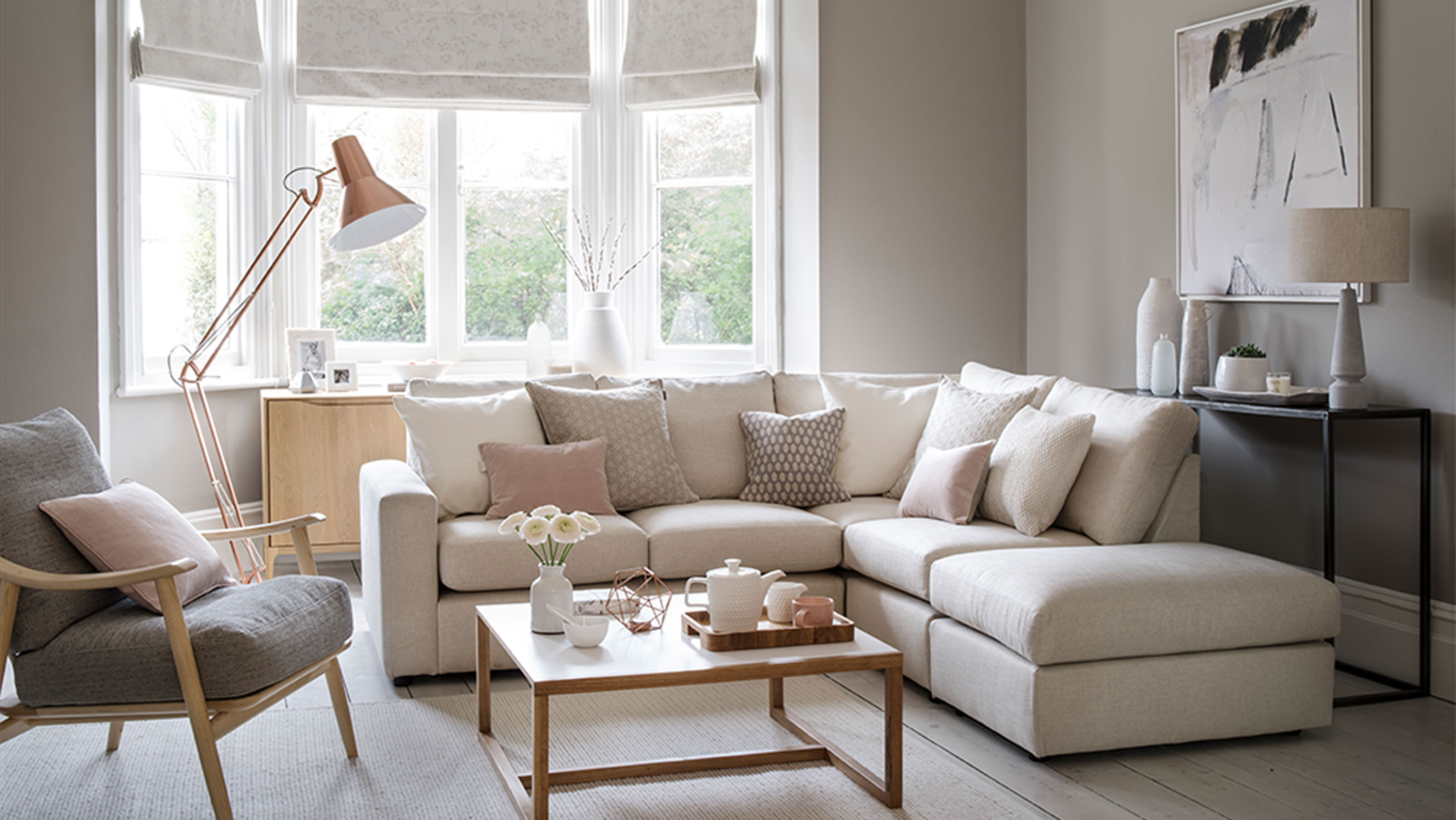

Holly Cockburn
Beige is a colour that gets a lot of bad press for being a 'safe' or 'bland' option - but we're here to advocate for this incredibly chic shade. In a space that's designed for relaxing, what better palette is there for creating a simple and pared-back scheme?
The colour experts, or indeed our Instagram feeds, will quickly tell us that beige is as popular as ever, the key to doing it well lies in how you style it up. There's a wider array of tones than ever before, from classic beige or warm camel, to pale fawn and neutral sandstone, beige living room ideas present the perfect opportunity to use this classy shade. It's cool, calm and collected - in short, a lovely neutral living room idea that will set the scene for tranquil mornings and switch-off evenings.
Beige living room ideas
‘Beige is perfect to be used on its own throughout a living room creating a cosy cocooning space,’ says Justyna Korczynska, senior designer at Crown. ‘Or when used with warm off-whites and gentle light neutrals it can become a real statement shade and bring warmth to the room.’
‘Beige can also perform very well in darker spaces where it looks best paired with even deeper, darker shades from a neutral colour family,’ adds Justyna. ‘It also pairs beautifully with all natural materials like wood, stone, clay and natural fabrics like linen or jute.’
1. Wrap the room in colour
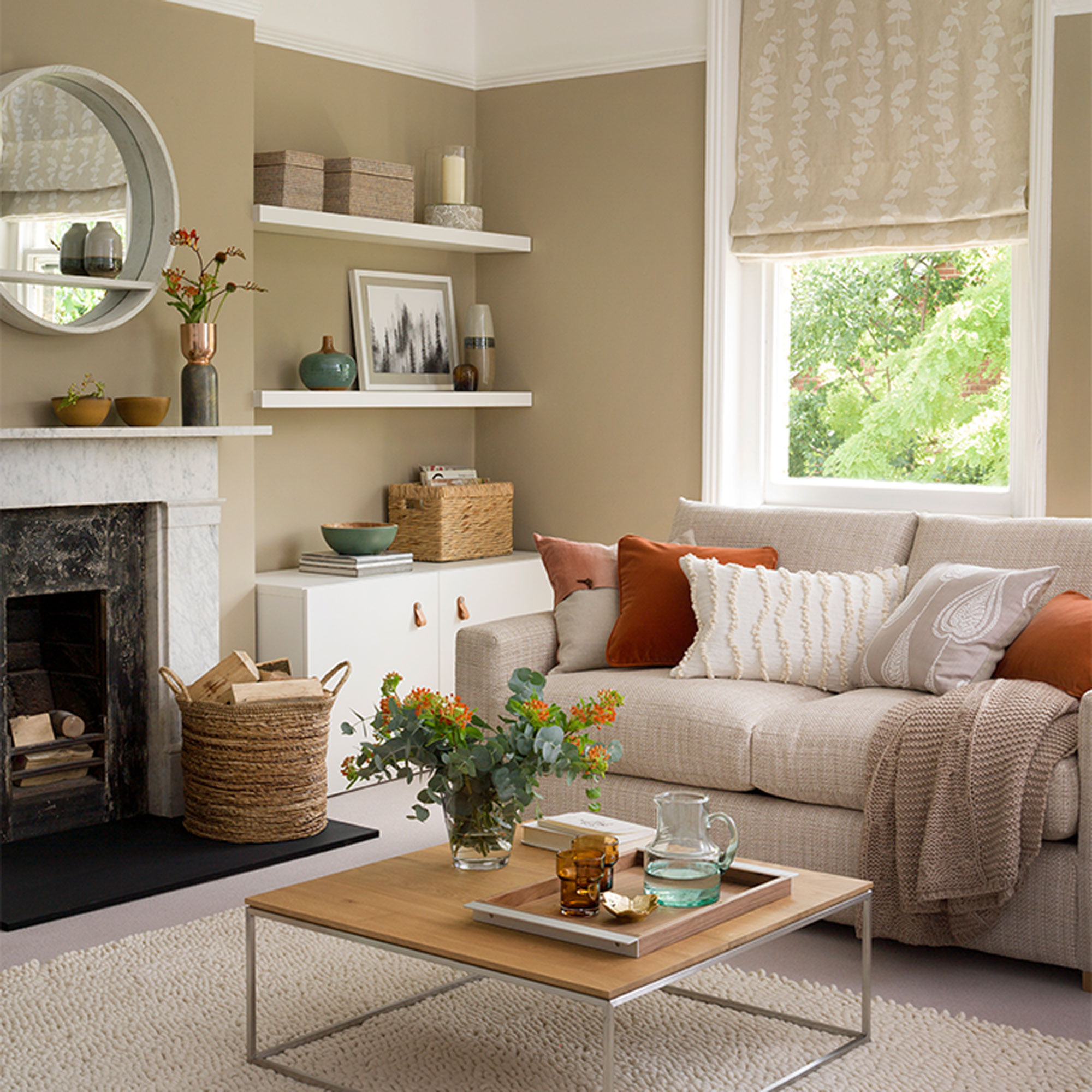
Use a warm beige for your wall colour to create a grounding backdrop for a cosy living room colour scheme. Painting the lower section of walls a darker shade of beige has the effect of wrapping the room in colour and creating a cocooning layer around sofas and seating areas. Painting the top section of the wall a paler shade to match the ceilings will add height and prevent the room from feeling cramped or overcrowded.
‘Neutral rooms need lots of texture to avoid looking bland, so add tufted rugs, knitted throws, embellished cushions and plenty of basketware,’ says interior stylist, Nicky Phillips.
2. Try a toned-down pattern
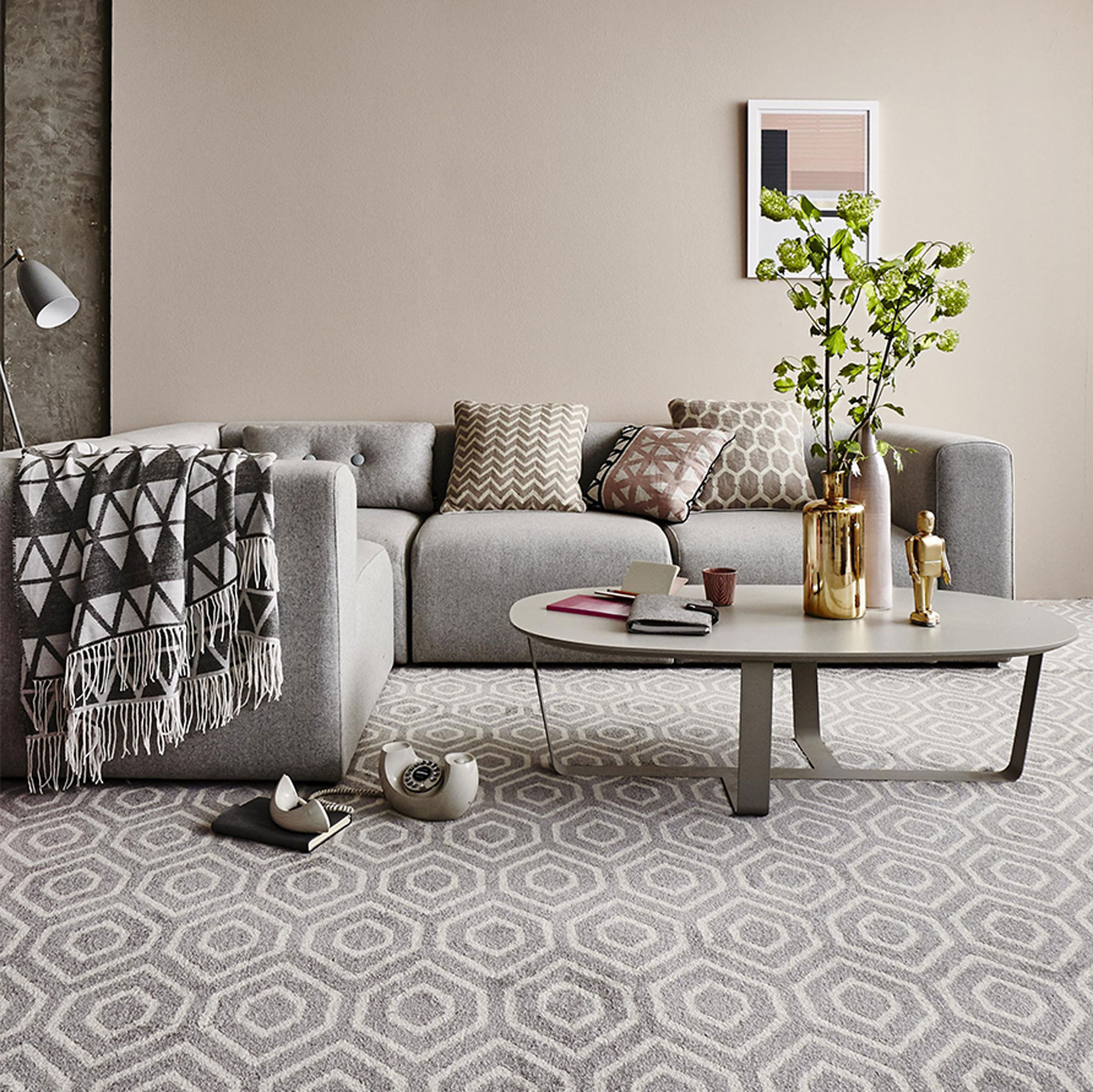
An all-beige living room is likely to feel bland if there’s no pattern or texture to add contrast and visual interest. While furniture and soft furnishings are an obvious and easy way of bringing in a hit of pattern, look to patterned living room flooring ideas if you’re after a more impactful effect.
Get the Ideal Home Newsletter
Sign up to our newsletter for style and decor inspiration, house makeovers, project advice and more.
Avoid bold patterns and overly-bright colours which will look brash and overpowering large-scale in a living room. Instead, keep to patterned carpets and rugs in soft, neutral tones, which will add an instant visual hit but look far more chic and understated.
‘Flooring holds the look of the room together so start by considering which type you prefer,’ says Punam Chada, carpet buyer at Carpetright. ‘Choosing a textured carpet in a neutral tone will create a welcoming look that is timelessly stylish or opt for a boldly-patterned carpet in a calming neutral that won’t overpower the room.’
3. Bring in tactile textures

Wall-to-wall beige can feel quite flat and bland used over a large area, so it’s important to layer the colour and work in plenty of texture and contrast finishes to give a living room scheme the quiet luxury look.
Panelling painted in a soft, silky shade of beige will give plain walls an extra visual dimension as well as feel warm and tactile to the touch. Contrast painted woodwork by bringing in woody tones on furniture and accessories, as well as natural stone, woven basketware and textured soft furnishings.
‘When selecting colours for your living space, think about how you would like the space to feel,’ says Ruth Mottershead, creative director at Little Greene. ‘Consider soothing tranquil tones or more natural neutrals to bring warmth and harmony to the room.’
4. Add warmth with a rug
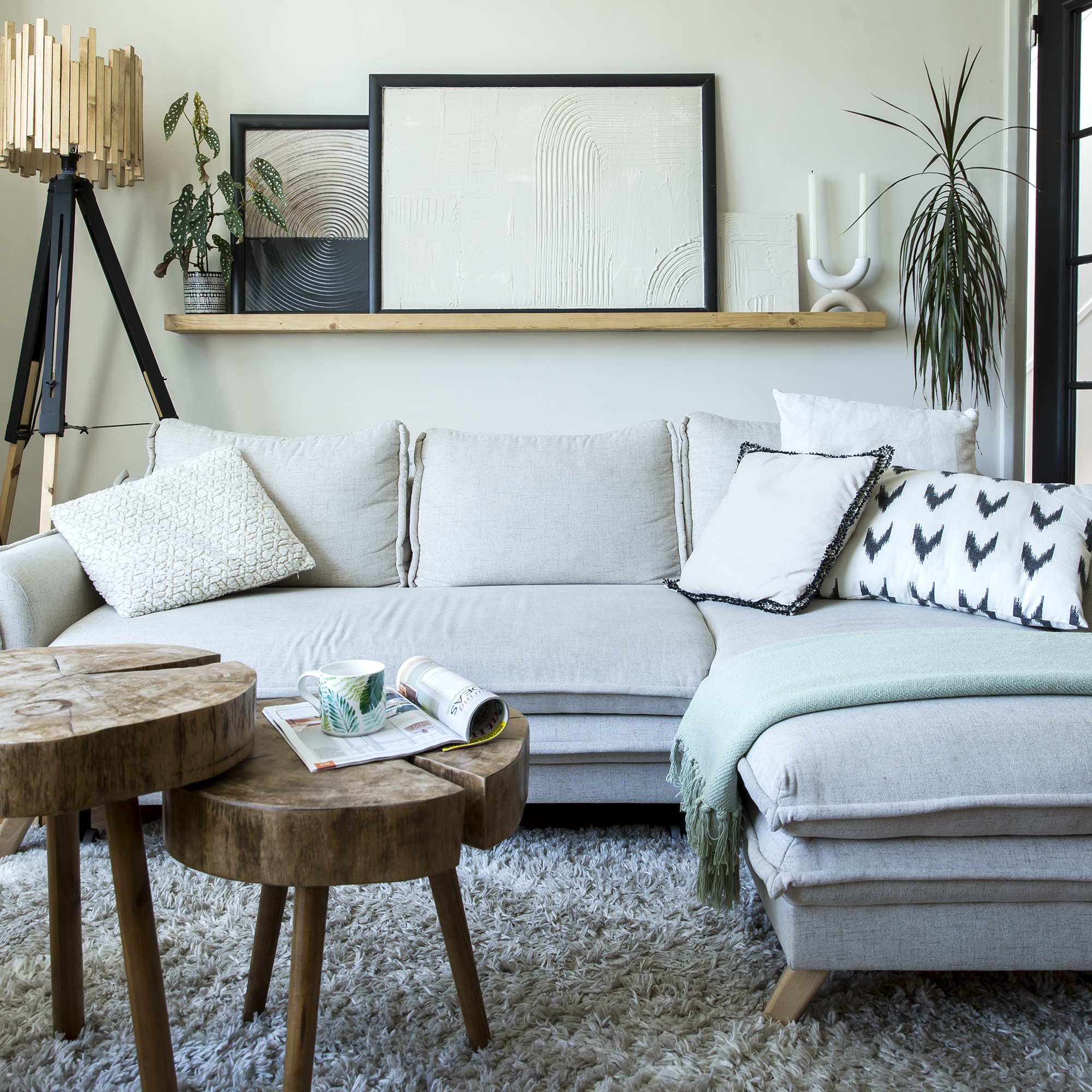
Wanting to amp up a beige space? Living room rug ideas are guaranteed to add comfort and interest to an otherwise pared-back scheme. You might want to keep the beige colour scheme with a simple rug, but there are many different weave styles that can still enhance a living room design. Plus, it'll add plenty of warmth under foot.
'Consider your rug as a textural element that adds depth to your room,' advises Emily Simmons, creative director at Ruggable. 'When designing your living area, envision the room in layers; with your initial layer as the flooring, followed by the rug, and finally the furniture and décor. Each layer should add colour, texture and pattern by incorporating different materials.'
5. Use beige as a backdrop
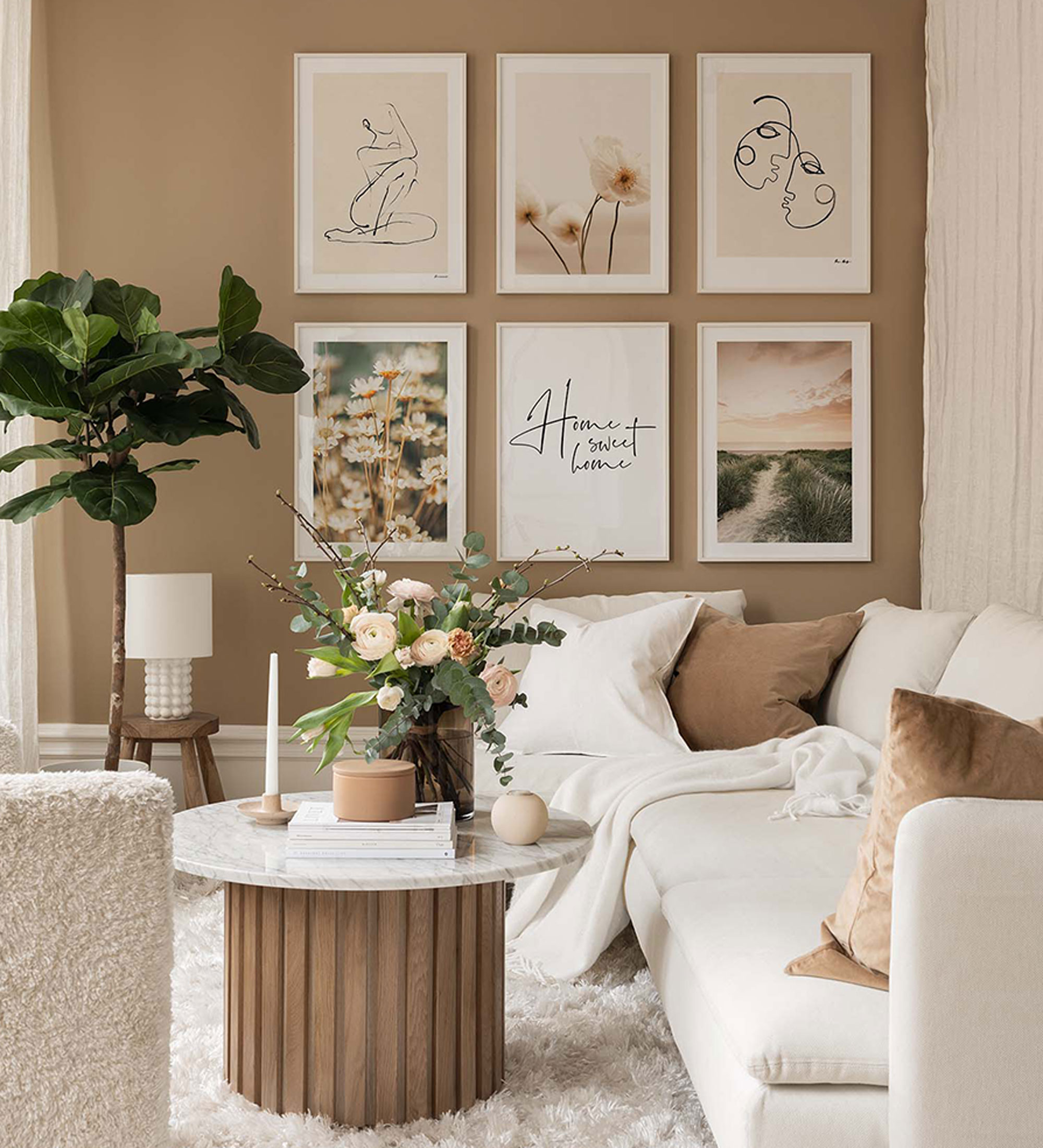
While beige has star qualities that make it a great lead colour for a living room, it also works well quietly as a background colour, allowing bolder furniture, soft furnishings and artwork to shine brighter.
Use classic beige walls as the backdrop for living room picture wall ideas. Choose images that are similar in style, colour and composition and display in matching frames and picture mounts to create a co-ordinated effect that looks super-classy as the focal point of the room.
Line frames up vertically and horizontally for a smart, formal look or go off-grid and arrange randomly for a more eclectic effect.
6. Work in darker details
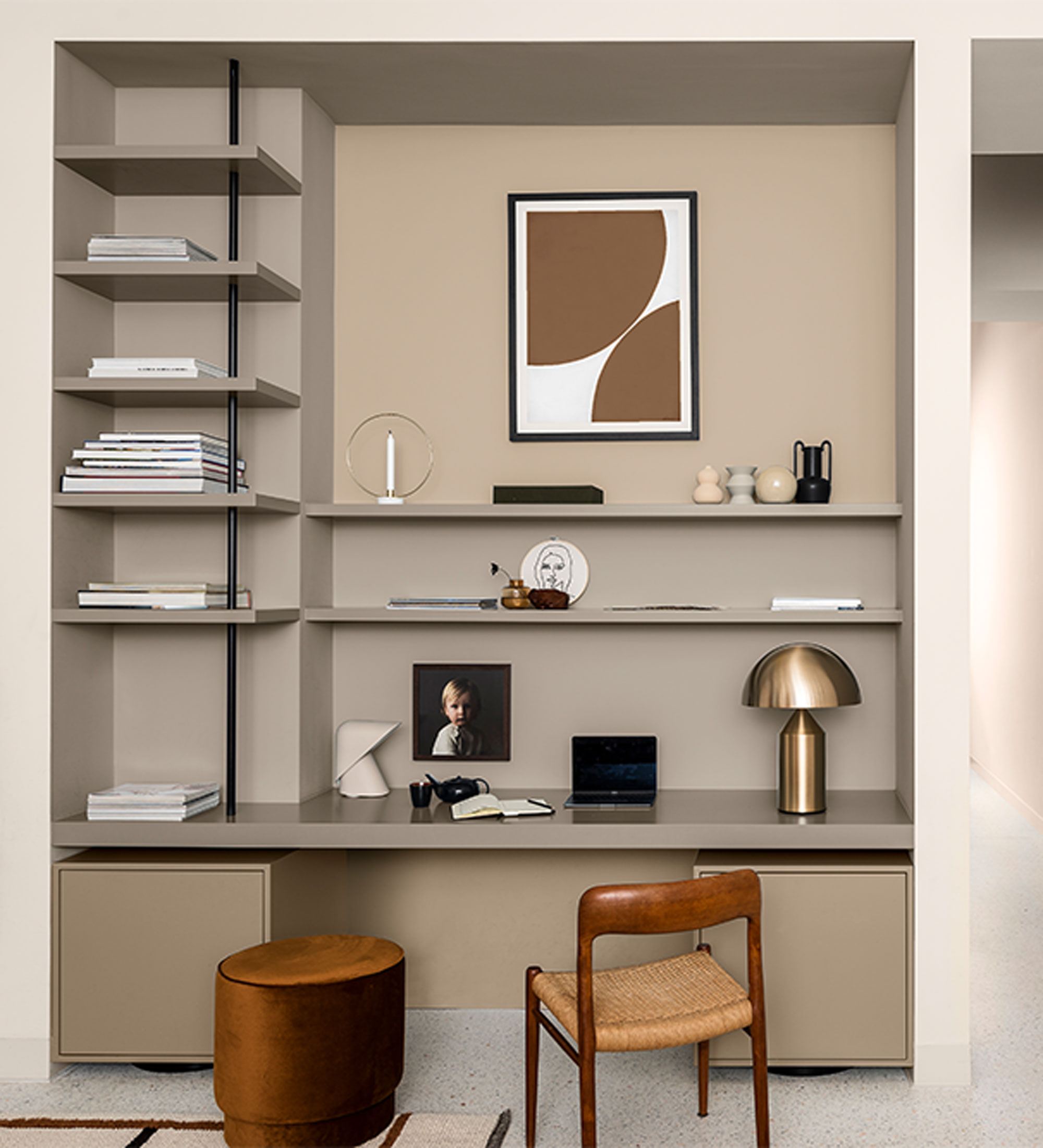
Using darker tones of beige as an accent colour is a great way of adding impact to a neutral or all-white living room. Try painting living room alcoves in a dark shade of beige, warm taupe or soft mushroom, painting walls, shelves and woodwork the same shade throughout. Using a darker background colour creates a more dramatic backdrop for display pieces and will make artwork and decorative items stand out in contrast.
‘A feature wall can be a focal point or add a striking contrast to other colours, but a feature wall can also work just as well in neutral colours to create a calming and warming space,' says Marianne Shillingford, creative director of Dulux. 'Neutral colours can add a real sense of depth and texture to a room and will complement a range of accessories and furnishings from woods, suedes and furs to chrome and glass to complete your look.’
7. Add a sassy stripe
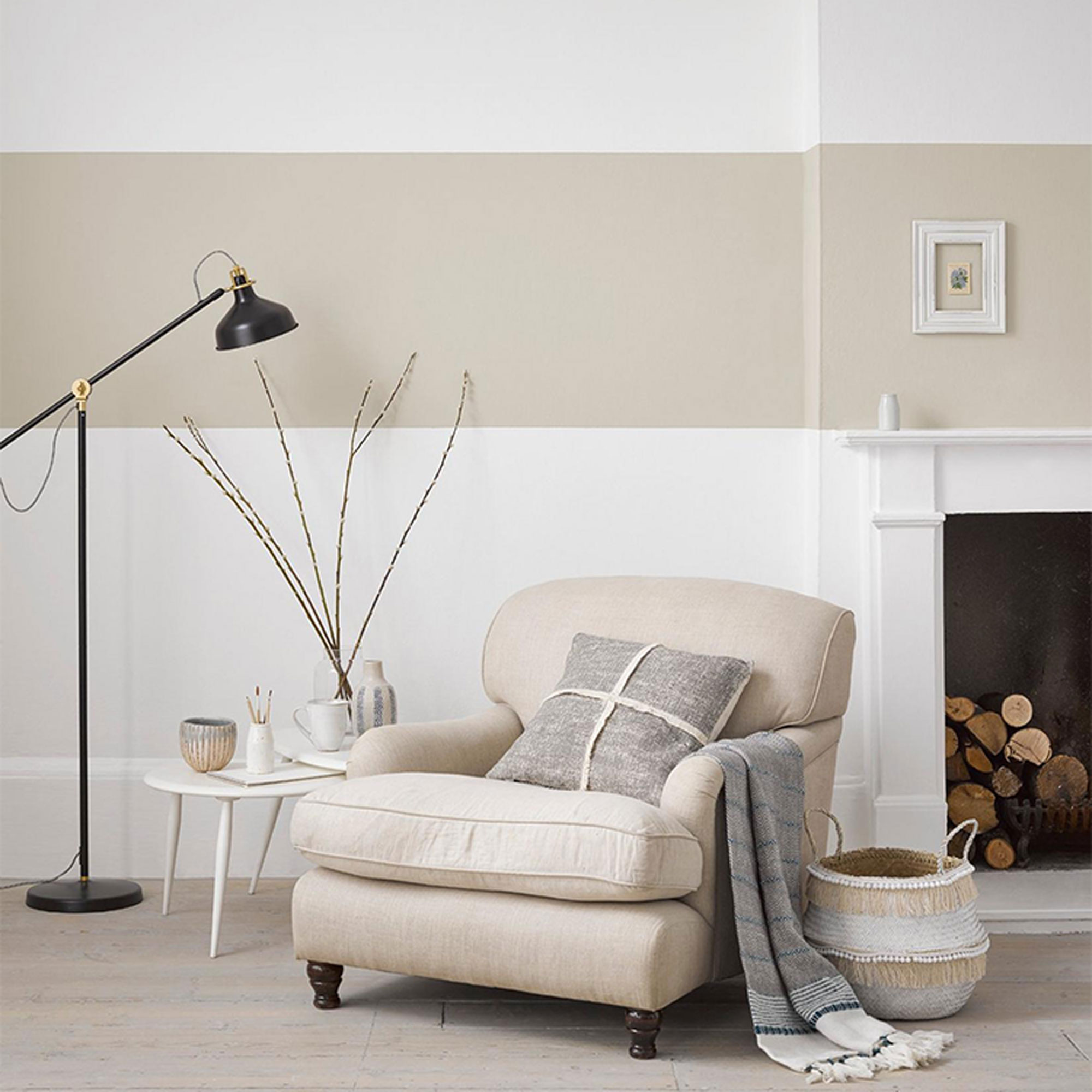
Perk up a plain white living room with this smart paint idea by painting a band of colour to run around the room. Choose a warm shade of beige for a chic look, choosing a tone that complements or contrasts with upholstery, flooring and curtains.
Position your stripe roughly at mid-level around the room. Line it up with any permanent room fixtures, such as doors or fire surrounds, or alternatively use a large item of furniture, such as a sideboard or bookcase as your starting point. Grab a pencil and tape measure to mark the line’s position all around the room and then use decorator’s tape to give you a neat edge when painting.
8. Punctuate with black
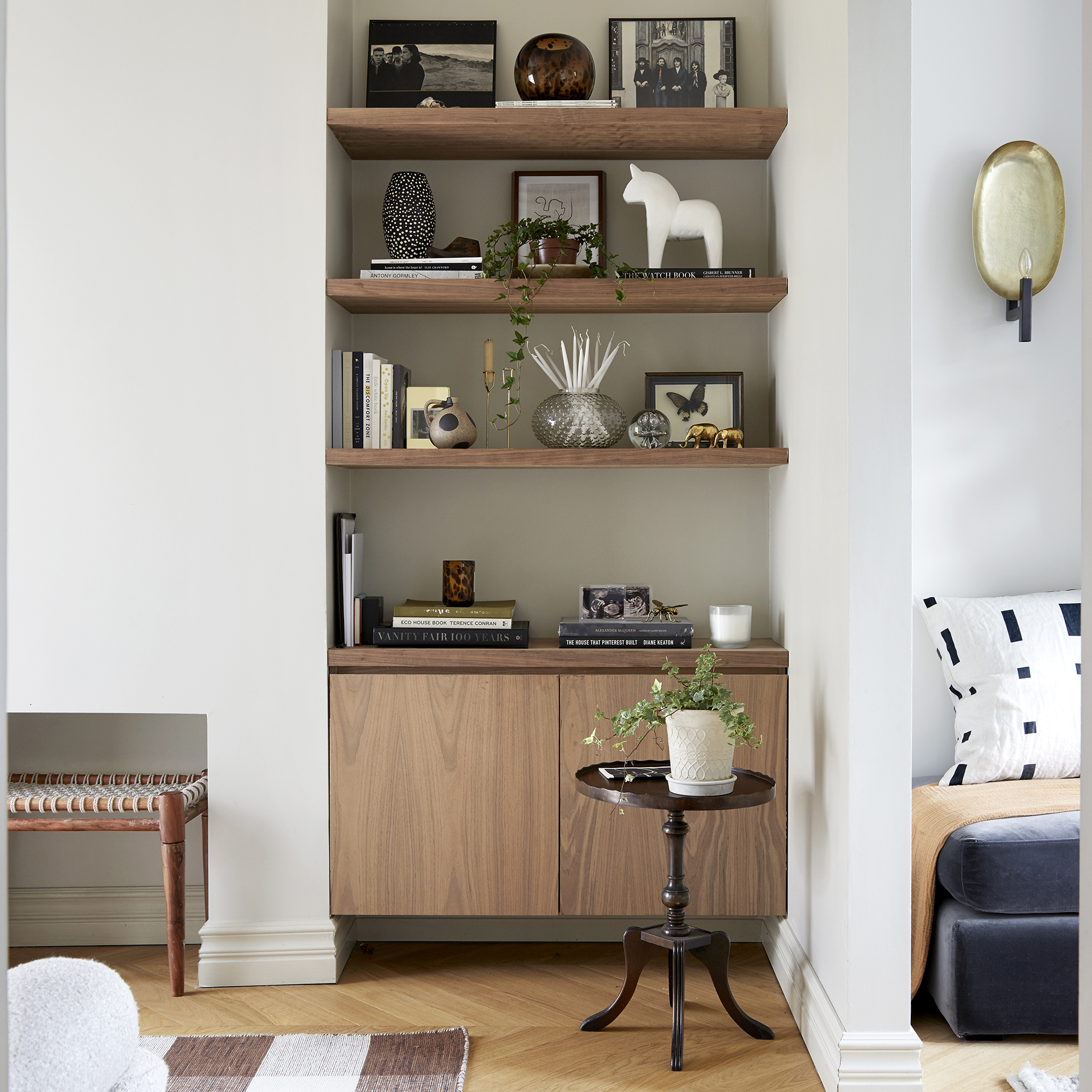
If you're not a fan of colourful interior decor, it can be tempting to stick entirely to a neutral palette when shopping for accessories. However, stepping out of your comfort zone in a small way by adding elements of black will make your living room look more expensive on a budget.
Photo frames and books (which can easily be found secondhand) are great for displaying on open shelving and will add an edge to a beige living room design.
9. Go for chic curves in neutral tones
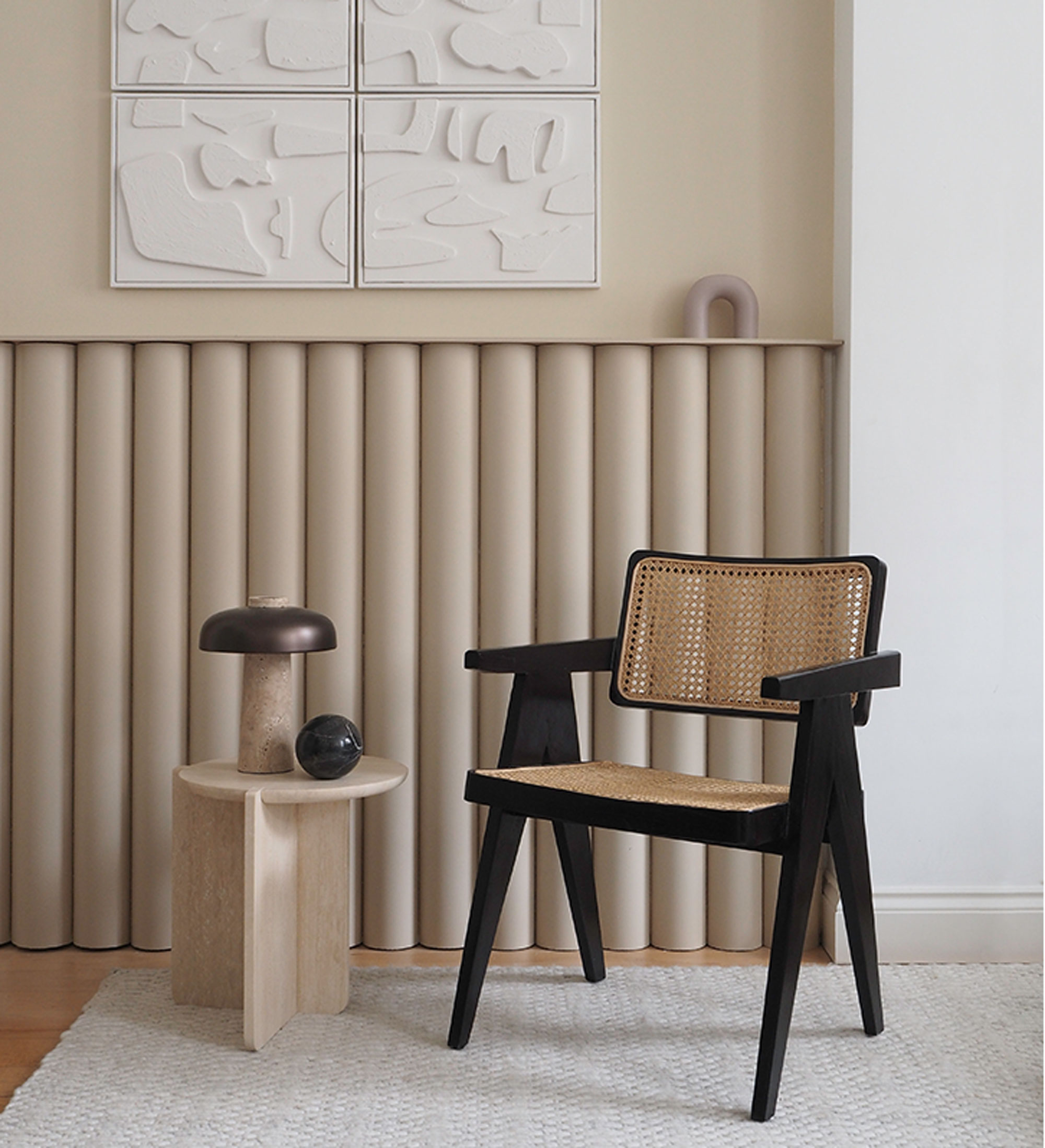
Give a neutral living room extra wow by cladding walls with on-trend curvy wall panelling. Perfect for a feature wall or inside a living room alcove, the effect is easy to create using lengths of plastic guttering. Once painted a calm shade of beige, it’ll be hard to tell what your panelling started out as.
‘Using neutral tones in your home is the best way to create a timeless backdrop, allowing you to interchange contrasting furniture and accessories,’ says Rob Abrahams, co-founder of COAT paints. ‘They can shine in their own right to create calming spaces, or provide the perfect backdrop for other elements of the room to shine, like furniture or artwork.’
10. Opt for a two-tone effect
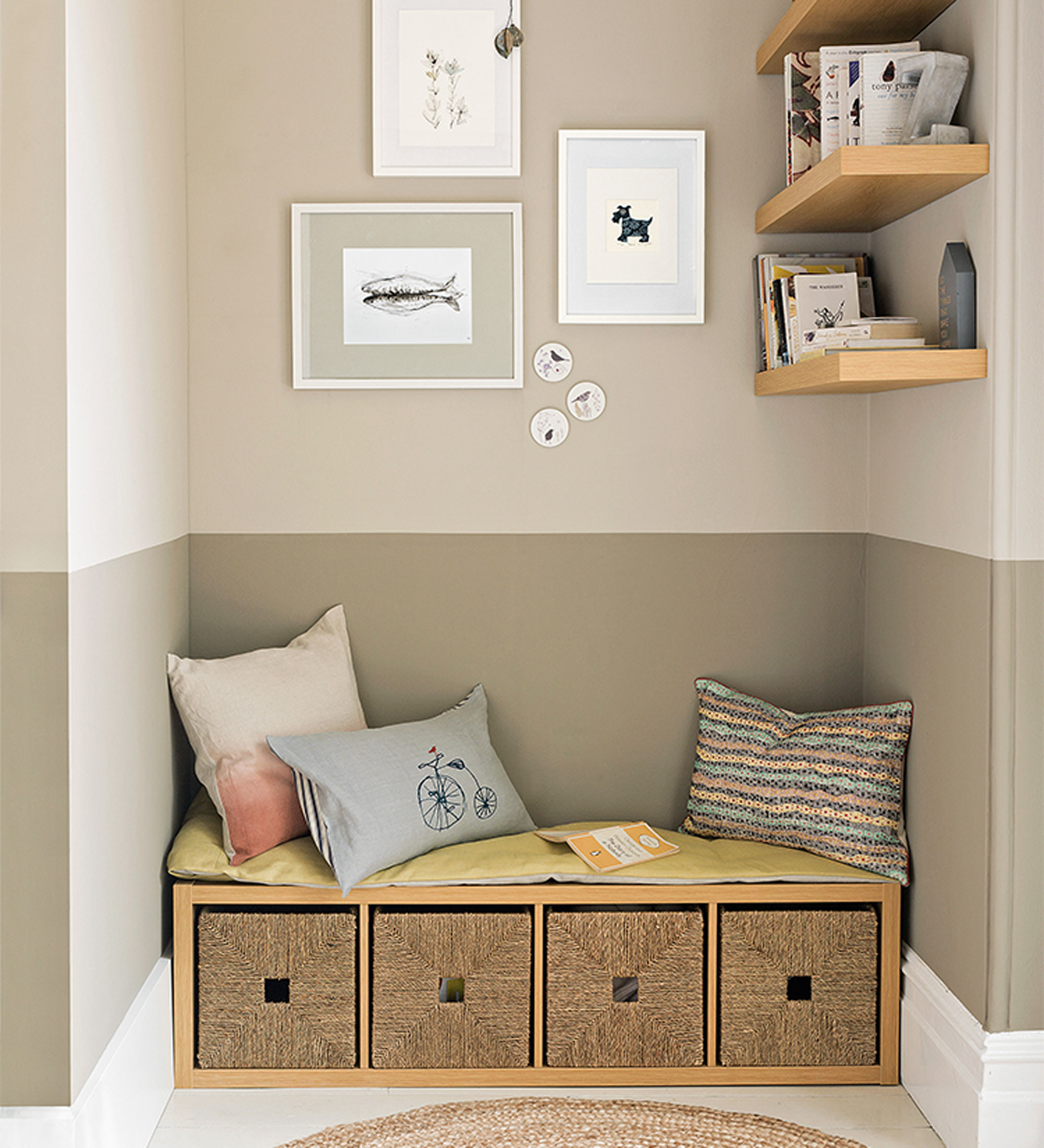
Add interest to a living room snug or around the entire width of the living room by painting walls in a half-and-half treatment. If existing walls are painted a pale beige tone, simply use a paint chart to select a shade that’s a few tones darker and then use this to paint a band around the lower portion of walls.
Opting for a darker neutral on the lower section of walls creates a warm and cosy backdrop for a mini seating area without reducing the light and airy feel of the living room. Add shelves to hold favourite books and make the space snug with a few tactile cushions, throws and floor rug – we love to stock up on these extras for less by nabbing nifty home decor discount codes.
FAQs
Is beige a good colour for the living room?
Calm, soothing and easy-on-the-eye, neutrals work just about anywhere so are the perfect go-to colour when it comes to living rooms. An easy way of making neutrals work in a living room is starting with a calm, quiet background colour and then building up your scheme from there.
While a safe option, neutrals can merge into one and look flat if there’s not enough contrast, so remedy this by layering in lots of different textures and natural finishes. Tone-on-tone patterns are another easy way of working more visual interest into a neutral living room, creating a livelier effect without overpowering the room with bold colour.
What colours go with beige in a living room?
Beige falls into the neutrals category, so pretty much any colour can be partnered with it. Keeping to accent colours on the warmer side of the spectrum is a good idea in a living room if you want the mood to feel cosy, warm and relaxing.
Add heat by opting for spicier colours, such as warm oranges, terracotta and brick, or for more subtle warmth, try working in blush pink, nude or soft coral shades. Black is a bolder choice for an accent colour, but it works beautifully teamed with beige and will add a smart edge and timeless look to a living room scheme. Calming greens will also work well with beige and other neutral shades. Pretty much any colours that are found together in nature, will sit well together inside too.

Lisa is Deputy Editor of Style at Home magazine and regularly contributes to sister title Ideal Home. She has written about interiors for more than 25 years and about pretty much every area of the home, from shopping and decorating, crafts and DIY to real home transformations and kitchen and bathroom makeovers. Homes and interiors have always been a passion and she never tires of nosying around gorgeous homes, whether on TV, online, in print or in person.
- Holly CockburnContent Editor
-
 My go-to Ninja coffee machine is on sale for Easter weekend
My go-to Ninja coffee machine is on sale for Easter weekendIt makes coffee shop quality achievable at home
By Molly Cleary
-
 When to plant out annual flowering plants for vibrant, colourful garden borders – and give them the best start, according to experts
When to plant out annual flowering plants for vibrant, colourful garden borders – and give them the best start, according to expertsNot sure when to plant out annual flowering plants? We've got you covered...
By Kayleigh Dray
-
 I'm a kitchen decor editor and didn't like this tableware trend - until I saw H&M Home's designer-look plates
I'm a kitchen decor editor and didn't like this tableware trend - until I saw H&M Home's designer-look platesThey made it easy to justify a new crockery set
By Holly Cockburn